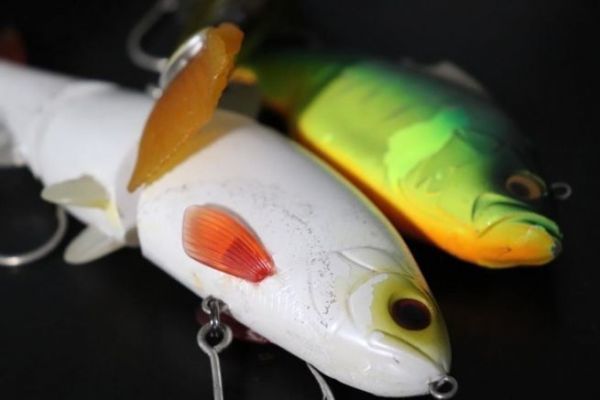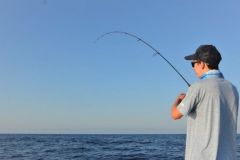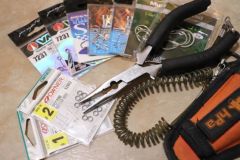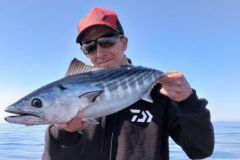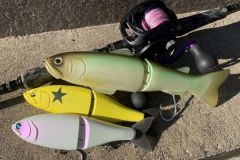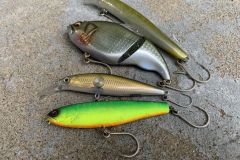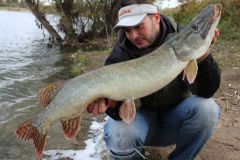1) Use simple hooks
Paint chips and circular marks on the sides of lures are typical consequences of using treble hooks! This scratched paint can be a starting point for the rest to flake off easily.
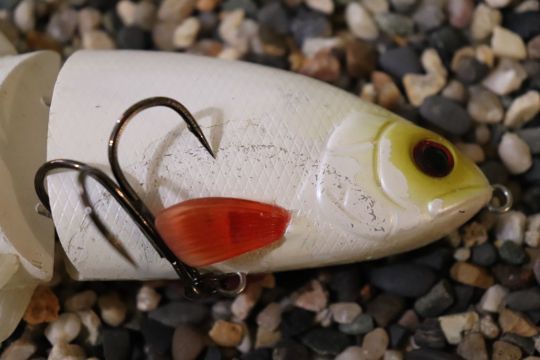
Single hooks are much less damaging to lure paint.
What's more, when stored, treble hooks will scratch and can tear the tails of other lures in contact, whereas single hooks do less damage.
If switching to single hooks is not an option, there are protective caps for treble hooks, which protect the points during storage.
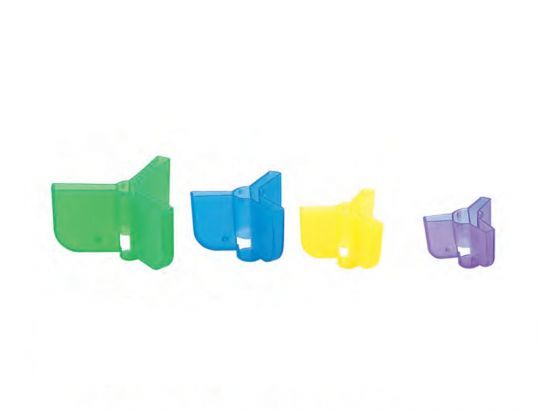
2) Protect flexible tails
A closed box on the soft tail of a lure or poor storage can quickly get the better of it. Without it, the lure immediately loses its realism and interest, and its swimming action may be altered. Care must be taken to position lures correctly in the box, with the tail placed flat, not bent.
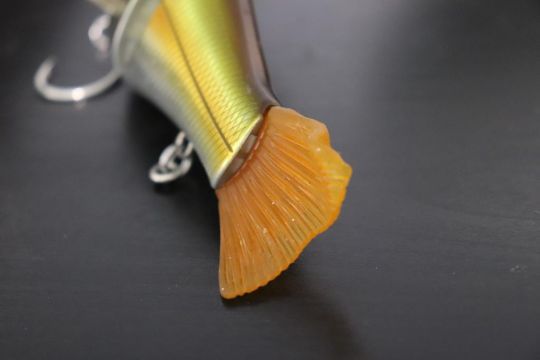
Another solution is to remove the tails when they are not glued, to store them flat separately, and install them each time they are used.
3) Don't clash them
On closer inspection, lures are often damaged before they've even seen the water. Keeping them in their original moulded box or storing them in a special box will help protect them during transport.
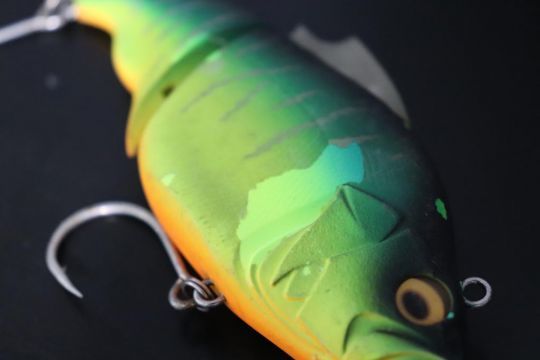
If they are knocked or crushed together, varnish and paint can degrade. It's important to balance your boxes, without overloading or underfilling them.
4) Oversize line resistance
When fishing with hard swimbaits, discretion is not the priority, so don't skimp on line strength.
When targeting pike, for lures under 100 grams, 40/100 to 45/100 nylon, or 40 to 60-pound braid, will secure them. For leaders, you can use titanium or steel in 30 to 40-pound strengths.
For heavier lures, 60- to 80-pound braid is ideal for maximum strength. Once again, titanium or high-strength steel leaders can be used.
For pike, if you opt for fluorocarbon, 100/100 is the minimum to use. I reserve this for very large lures only. When it seems impossible for a fish to swallow it whole in its mouth and for it to have its teeth in contact with the leader, even if the latter does not guarantee 100% of the risk of cutting.
For black bass, a leader between 40 and 80/100 is suitable for most hard swimbaits.
5) Rinse lures
Although these lures are often reserved for pike or black bass, i.e. freshwater, if you use them in salt or brackish water, remember to rinse them with clean water at the end of the session.
Whatever the case may be, an occasional cleaning won't do them any harm. Soil, algae and pollen that accumulate in the joints, which are often made of metal, can lead to corrosion, as they store moisture.
